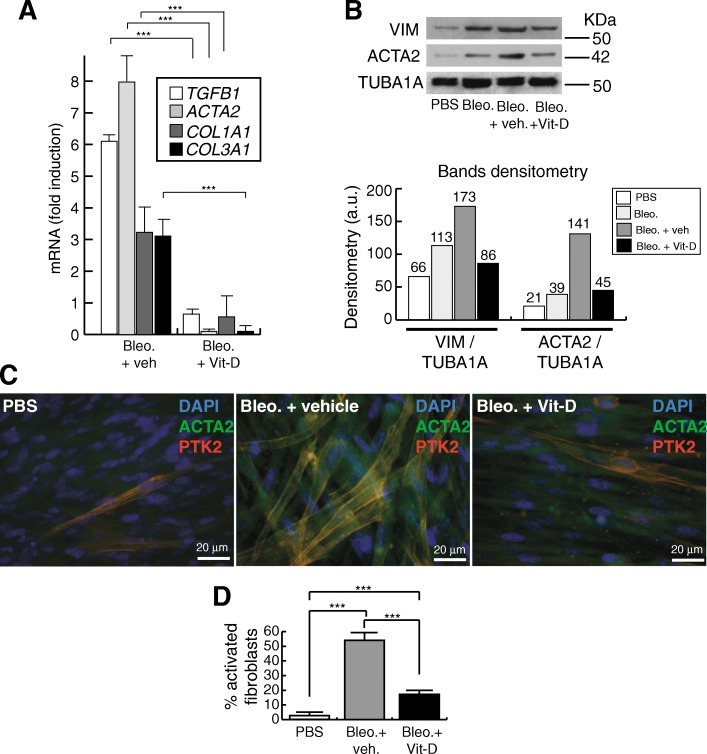Fig. 4.
Effect of vitamin D on the fibrogenic activation of myofibroblasts. a RT-qPCR result: expression of a representative profibrogenic cluster of genes. Cells were pretreated with 5 nmol/L vitamin D for 2 h, subjected to a bleomycin shock (12 μg/mL for 6 h) and then treated with 5 nmol/L vitamin D or its vehicle. Analysis was performed 72 h post-shock. Values are folds of induction over control cultures (treated with bleomycin vehicle: PBS); veh.: vitamin D vehicle. The results presented in the figures are means ± SEM. Significance of the analysis is indicated as ***, P < 0.001. b Detection of VIM (vimentin) and ACTA2 (α-SMA) in myofibroblasts cell extracts. Cells were pretreated with 5 nmol/L vitamin D for 2 h, subjected to a bleomycin shock (12 μg/mL for 6 h) and then treated with 5 nmol/L vitamin D or its vehicle. Cell extracts were obtained at 72 h post-shock. PBS is the bleomycin vehicle; veh.: vitamin D vehicle. TUBA1A (tubulin α) was used as loading control. KDa: kilodaltons. Bottom panel: densitometry analysis of bands; a.u.: arbitrary units. c Representative micrographs of indirect immunofluorescence detection of ACTA2 (α-SMA fibers) and PTK2 (focal adhesion kinase), two markers of the profibrogenic activation. Cells were pretreated with 5 nmol/L vitamin D for 2 h, subjected to a bleomycin shock (12 μg/mL for 6 h) and then treated with 5 nmol/L vitamin D or its vehicle. Cells were processed for immunofluorescence 72 h post-shock. d Quantification of the immunofluorescence result (% of activated fibroblasts showing clear expression of α-SMA fibers and PTK2)

